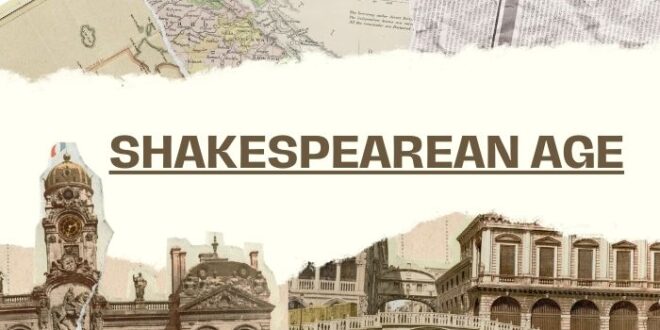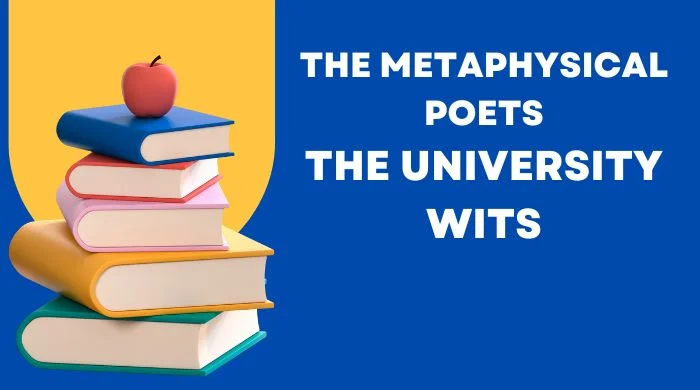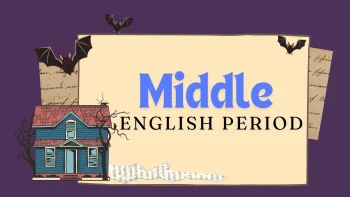Shakespeare had written his serious plays in the Jacobean Age. But he is called an Elizabethan dramatist and never the Jacobean. The time span from 1590 to 1616 is also called the Shakespearean Age. Because he has written serious dramas at the moment. Some contemporary writers and their important works of Shakespearean Age are given below.
Ben Jonson is one of the writers of the Shakespearean Age
He started writing drama in the Elizabethan Age. But he continued to write in this period too. In the Jacobean Period, he has written Volpone, The Alchemist, The Silent Woman, Bartholomew, The Devil is an Ass and Every Man Out of His Humour.
John Webster
John Webster is the greatest dramatist in the history of English literature outside Shakespeare. Probably he was born in 1580 and died in 1625. It is said that he was the son of a London tailor. He was a member of the Merchant Tailor’s Company. He has written The White Devil or Vittoria Corombona and The Duchess of Malfi.
The Duchess of Malfi
The Duchess of Malfi is a tragedy. But it is not a tragedy in the strict sense. Because it has melodramatic elements. It can be regarded as a revenge play.
The Date of Composition
The Duchess of Malfi was composed between 1612 and 1614. Because the actor, Ostler died in 1614 and he acted the role of Antonio. The White Devil was written between 1610 and 1612.
Source of the Play
Webster may have taken the story of The Duchess of Malfi from William Painter’s narrative The Palace of Pleasure. He may take the hints from French writer Francois de Belleforest’s Histories Tragiques. Belleforest was indebted to Bamdello’s Novelle.
Male Characters
Antonio: His full name is Antonio Bologna. He is the steward of the Duchess’ household. He is married to the young Duchess. He is mistakenly killed by Bosola.
Ferdinand: He is the Duke of Calabria. He is the elder brother of the Duchess. He is a villain.
Cardinal: He is the bother of Ferdinand and the Duchess. He is also a villain. He kills Julia by poisoning.
Bosola: His full name is Daniel de Bosola. He is a gentleman of the horse. He is a gally-slave. Then he becomes a hired murderer. He kills the Duchess, Antonio, their children and many others.
Delio: He is the friend to Antonio.
Castruccio: He is an old lord. He is the husband to Julia. Marquis of Pescara: He is a lord.
Count Malatesta: He is a Count.
Rederigo: He is a lord.
Silvio: He is a lord.
Grisolan: He is a lord.
The Doctor: He treats Ferdinand.
Court Officers: There are some officers.
Three Young Children: They are the children of the Duchess. Two Pilgrims: They talk about the Duchess.
Attendants and Executioners: There are some attendants and executioners.
There are several madmen, including Astrologer, Tailor, Priest and Doctor.
Female Characters
Duchess of Malfi: She is the main character in the play. She is a young widow. She falls in love with Antonio. She is brutally killed by Bosola.
Cariola: She is the maidservant of the Duchess.
Julia: She is the wife to Castruccio and mistress to Cardinal. She is killed by Cardinal.
An Old Lady: She is mercilessly rebuked by Bosola.
Ladies: There are some other ladies.
The Duchess of Malfi: Story in Brief
The Duchess is a very beautiful and a young widow. Her two brothers do not like her second marriage. She declares that she will not marry for the second time. But she has already fallen in love with a Steward, Antonio by name. She gives birth to several children by him. But the spy, Bosola can try to catch the fact. He wants to find out the fact that whether she is married or not. He understands it and informs it to Ferdinand and Cardinal. The Aragonian brothers become furious. They order to kill the Duchess. Bosola captures the Duchess tactfully. In the prison, she along with her children and Cariola is mercilessly killed. Antonio is also killed by mistake. Bosola demands his reward but is insulted by both Ferdinand and Cardinal. He is also the victim blackmailing. Ferdinand turns to mad after seeing the dead body of the Duchess. He begins to behave like a wolf. At last, Bosola kills Ferdinand and Cardinal. He is killed by Ferdinand.
Other Dramatists of the Shakespearean Age
There are some other dramatists in the period. They have also played an important role in the development of drama. George Chapman, John Marston, Thomas Dekker, Thomas Middleton and Beaumont and Fletcher are remarkable. Beaumont and Fletcher have written Philaster and The Maid’s Tragedy.
Essay the Shakespearean Age
এ যুগে essay বা অন্যান্য গদ্যরচনার সাথে সংশিষ্ট ছিলেন অনেকেই। Francis Bacon (ফ্রান্সিস বেকন), John Donne (জন ডান) এবং প্রথম জেমসের (James- I) নাম এক্ষেত্রে বিশেষভাবে উল্লেখযোগ্য।
Francis Bacon (1561-1626)
Elizabethan যুগে Bacon অনেক প্রবন্ধই লিখেছেন। এ যুগেও তা অব্যাহত থাকে। এ সময়ে তাঁর উল্লেখযোগ্য রচনাগুলো হলো The Advancement of Learning (1605), Novum Organum (1620) 4 Instauratio Magna
John Donne (1573-1631)
He has written Paradox and Problem (written 1590s, published in 1633), Bianthanatos (about 1607), Pseudo-martyr (1610), Ignatius His Conclave (1610), Essays in Divinity, Devotions and Sermons.
Visit our YouTube Channel: “Sopner BCS“
James-I
তিনি ছিলেন ইংল্যান্ডের রাজা। তিনি ইংলিশ ভাষাও ভালোভাবে জানতেন না। কিন্তু তিনিই পবিত্র Bible অনুবাদ করার জন্য আগ্রহী হয়ে ওঠেন। ফলে তিনি চল্লিশ সদস্যের একটি সংকলক দল মনোনীত করেন এবং পুরো অনুবাদ-কর্মের supervision বা তদারকি করেন। সুতরাং ১৬১১ সালে The Translation on the Holy Bible প্রকাশিত হয়। এ অনুবাদের ভাষা অত্যন্ত পরিশুদ্ধ ইংলিশ ভাষা হওয়ায় গদ্যের ভাষা হিসেবে এটি ব্যাপক জনপ্রিয়তা পায়। এর ফলে বাইবেলী গদ্যরীতি বলে এক ধরণের রীতির জন্ম হয়।
Major Writers and Their Major Works of Shakespearean Age

1. Francis Bacon (1561-1626)
(i) The Advancement of Learning (1605)
(ii) Novum Organum (1620)
(iii) Essays (1625)
2. William Shakespeare (1564-1616)
(i) Measure for Measure (1604)
(ii) Othello (1604)
(iii) Macbeth (1605)
(iv) King Lear (1605)
(v) Antony and Cleopatra (1606)
(vi) Coriolanus (1606)
(vii) Timon of Athens (unfinished-1608)
(viii) Pericles (in part-1608)
(ix) Cymbeline (1609)
(x) The Winter’s Tale (1610)
(xi) The Tempest (1611)
(xii) Henry VIII (in part- 1613)
(xiii) The Sonnet (1609)
3. King James-I
(i) The Translation of the Bible into English (1611)
4. John Donne (1573-1631)
(i) Verse Letters
(ii) Epicedes and Obsequies
(iii) Epithalamions
(iv) The Anniversaries (1611 and 1612)
(v) The Divine Poems
(vi) Holy Sonnets
(vii) Miscellaneous Divine Poems
(viii) Paradox and Problem (written 1590s, published in 1633)
(ix) Bianthanatos (about 1607)
(x) Pseudo-martyr (1610)
(xi) Ignatius His Conclave (1610) (xii) Essays in Divinity
(xiii) Devotions
(xiv) Sermons
5. Ben Jonson (1573-1637)
(i) Volpone Or The Fox (1609)
(ii) The Silent Woman (1609)
(iii) The Alchemist (1610)
6. Cyril Tourneur (1575-1626)
(i) The Revenger’s Tragedy (1600)
(ii) The Atheist’s Tragedy (1611)
7. John Webster (1580-1625) (i) The White Devil (1612)
(ii) The Duchess of Malfi (1614)
8. Beaumont (1584-1616) and Fletcher (1579-1625)
(i) The Maid’s Tragedy (1610)
(ii) A King and No King (1611)
(iii) Philaster (1611)
9. George Herbert (1593-1633)
(i) The Temple
Literary Features of the Shakespearean Age
- Like the Elizabethan Age, drama is the main expression of the Shakespearean Age (এলিজাবেথীয় যুগের মতো এ যুগেও নাটক প্রধান রচনা হিসেবে লিখিত হয়),
- The dramatists practise classical rules of drama (নাট্যকারেরা ক্ল্যাসিক্যাল নাট্যধারা অনুশীলন করেন),
- Elizabethan idealisation of love and romance almost dies out (প্রেম ও রোমান্সের প্রতি এলিজাবেথীয় মোহ নিঃশেষ হয়ে যায়) and
- Poetry takes a new and startling turn in the age (এ যুগের কবিতায় একটা নতুন এবং চমৎকার পরিবর্তন আসে)।
The Shakespearean Age, spanning the late 16th and early 17th centuries, marks a golden era in English literature and culture. This period, under the reign of Queen Elizabeth I and King James I, saw the flourishing of drama, poetry, and a deep exploration of human nature.
William Shakespeare, the era’s most iconic figure, captured the complexities of life, love, power, and ambition in his plays and sonnets, leaving a timeless legacy. The age also witnessed advancements in theater, with the Globe Theatre becoming a cultural hub.
Beyond Shakespeare, the period was rich with contributions from other literary giants like Christopher Marlowe and Ben Jonson, whose works reflect the vibrancy and intellectual curiosity of the time. The Shakespearean Age remains a pivotal chapter in the history of English literature, embodying the spirit of creativity, innovation, and exploration that continues to inspire generations.
 Sopner BCS Sopner BCS: We fuel your BCS dreams
Sopner BCS Sopner BCS: We fuel your BCS dreams




